The third generation of computers was based on the Integrated Circuits which replaced the transistors in the second generation. The various advantages in the 3rd Generations of computer due to Integrated circuits were increased processing speed, less power consumption, less heat generation, reduced size of the system, greater storage capacity, portability, etc. Due to all these reasons the third generations of computers were an instant commercial success. Let’s discuss the features, advantages, and disadvantages of the third generation of computers in more detail.
Advantages of Third Generation Computer
- Integrated Circuits (IC) were used
- Computers were more reliable than previous generations
- The size of computers reduced
- Faster processing and less computational time
- Less Electricity Consumption
- Computers can support High-level Languages
- Increased Storage Capacity of Computer
- Increased Accuracy
- Less Failure Rate of Hardware
- Less prone to Programming Error
- More Versatile
- Less Maintenance required due to IC
Disadvantages of Third Generation Computer
- Air Conditioning Required in the Mainframes but not in Minicomputers
- The Price of Computers very costly
- Integrated Circuits could not be repaired easily
- Integrated Circuits were very complicated and required specialized workers
- Sophisticated Technology required to manufacture Integrated Circuits
Each Advantages & Disadvantage are justified and explained in detail under the Characteristics of Third Generation of Computer.
Third Generation of Computer History [1964 to 1975]
During 1966, the mass increase of computers accelerated with the ‘Third Generation’. The computers did not remain a ‘High Tech Thing’ afforded by only large business, but rather it changed to ‘Personal Computers’ affordable for masses. The technology relied on the transistor integrated circuits which ended with a microprocessor-based 4th generation.
Third Generation of Computer History Events in chronological order
In 1958, Jack Kilby at Texas Instruments invented hybrid integrated circuits (hybrid IC). These hybrid ICs were not suitable for mass production.
In 1959, Robert Noyce at Fairchild Semiconductors invented monolithic integrated circuits (IC) chips. These IC chips required a planar process, allowing integrated circuits to be printed on silicon plates.
In 1961, Semiconductor network computers created the first general-purpose computer based on Rober Noyce’s monolithic integrated circuits. Later, NASA used this technology in their Apollo Guidance Computer.
In 1965, SDS 92 was one of the early commercial uses of third-generation computers.
In 1966, Hewlett Packard (HP) introduced their 2116A minicomputer. It has HP’s first commercial computer of 16-bits which used monolithic ICs.
In 1969, IBM prepared their first commercial IC-based third-generation computer named System/360 Model 85.
In 1971, IBM prepared its System/370 successor of the System/360 family. System/370 involved extensive use of ICs. IBM started its mass production and shipment to other places.
In 1971, the ILLIAC IV was the fastest supercomputer in the world based on the third generation IC designed to process 1 billion operations per second.
The third generation computers underwent significant innovation in the 1960s and 1970s. The physical size of computers and the broadening of computer vendors brought the power of computing to the hands of people. With smaller and affordable hardware led to the development of the operating system Unix.
Features & Characteristics of Third Generation of computer
Third generation of computer used Integrated Circuits (ICs)
The time period of Second-generation computers is marked between 1955 to 1964, whereas the time period of the third generation of computers is between 1964 to 1975.
The transistors from the second generation were miniaturized and printed on integrated circuits in the third generation of computers.
The transistor are electronic device that can act as a current amplifier and as an ON/OFF switch. The transistors were a landmark of technology and they replaced the vacuum tubes in the first generation of computers.
Transistors were miniaturized and placed on silicon chips, called semiconductors, which drastically increased the speed and efficiency of computers.
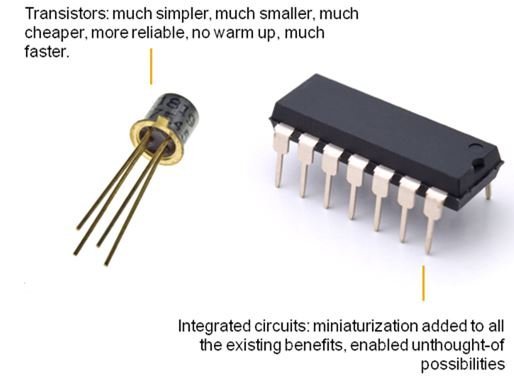
The Integrated Circuits (IC) replaced the transistor technology in the third generation, as the IC used lithography which can pattern the entire circuit onto the resulting chips, containing up to millions of individual transistors.
The Integrated Circuits can also pattern other components such as a resistor, capacitors, inductors, etc apart from transistors.
So, the Integrated Circuits eliminated the need for physical electronic components as they were equivalent to the lithography patterns that were drawn on the silicon boards of IC.
If the transistor required the size of a fingernail tip to sit on the circuitry in the second generation of the computer, then in the third generation of a computer the same transistor only required a grain of rice size to be imported on the chips.
The integrated circuits were invented by Jack Kilby in 1958 at Texas Instrument.
The first commercial computers based on Integrated Circuits were made by IBM, and this marked the beginning of the third generation of computers.
Technologies that marked the Generation of computers
| Generation of Computer | Technology |
| First generation | Vacuum tubes |
| Second Generation | Transistors |
| Third Generation | Integrated Circuits (IC) |
| Fourth Generation | Microprocessor |
| Fifth Generation | Artificial Intelligence |
Types of Operating System in 3rd Generation Computer
In the third generation of computers, the types of operating systems used were Remote Processing, Time-Sharing, Real-Time, Multiprogramming Operating System.
Aside from the Multiprogramming Operating System, all other Operating Systems were introduced in the third generation of computers.
The various functions that each operating system provided were –
Remote Processing Operating System – this operating system introduced us to a client-server architecture. The instructions to be processed can be provided by one computer to another computer that has powerful processing capacity, and the result from processing will then be returned to the first computer.
Time-Sharing Operating System – In this operating system, the processor’s time is shared among multiple users simultaneously. Therefore Time-sharing operating systems enabled many people to use various terminals of the same mainframe computer system at the same time. The objective of the time-sharing operating system was to minimize the response time.
Real-Time Operating System – In this operating system, the time interval between the processing inputs and generating the result is so small that it appears to control the environment.
All of the above-operating systems were introduced in the third generation of computers. All these operating systems made computers applicable in various fields of studies, industries, etc.
Third Generation of Computer Programming Languages
The programming languages that were available in the third generation of the computer were FORTRAN – II to IV, COBOL, PASCAL, BASIC, ALGOL – 68, etc.
FORTRAN (Formula Translator)
- One of the Earliest High Level Programming Languages
- Developed by John Bsckus at IBM
- Commonly used version – FORTRAN IV and FORTRAN 77
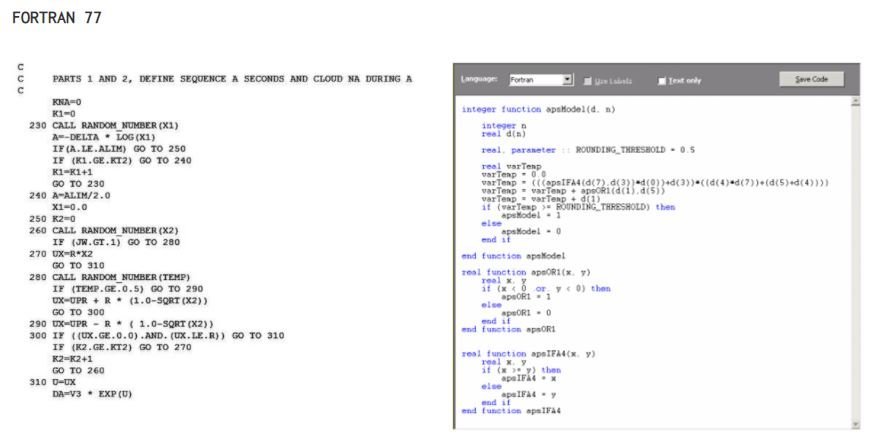
ALGOL (Algorithmic Language)
- Developed by Alan J. Perlis
- Introduced BLOCK STRUCTURE, programs created of independent blocks to contain both data and instruction.

COBOL (Common Business Oriented Language)
- Language designed to run business application
- One of the oldest high level language
- COBOL was a widely used language in the world.
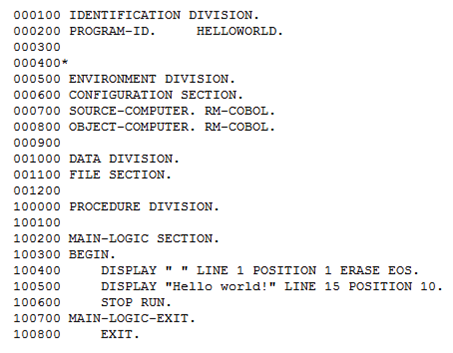
In the first generation of computers, machine language was only used and they were in the form of binary codes.
In the Second Generation of Computer, the assembly language replaced the high-level language, and also high-level languages such as FORTRAN and COBOL came.
In the Third Generation of Computer actual development in the high-level programming language was seen.
The High-Level Programming Language made programming to be a lot easier than before and therefore many independent programmers started writing their software and application, therefore the third generation of computers has a great number of application software for their computers.
The third generation of computers is therefore also marked for their support of high-level language.
Third Generation of Computer input and output devices
In the second generation of computers, the computer system was dependent on the punch cards for input.
If any programmer has to give instructions to the computer then they would have to code them into punch cards and then insert them into computers.
For this reason, the second generation of computers did not gain much popularity because of the tedious method of human-computer interaction.
In the third generation of computers, keyboards and monitors replaced the punch card mechanism.
So, if the programmer has to give instructions to the computer then he will simply type them from the keyboard and it will appear on the monitor.
This encouraged many people to learn computer programming and develop their software.
Hardware Characteristics of 3rd Generations of Computer
The third generation of computers generated very less heat as compared to the second generation of computers. This is because of silicon, silicon is a semiconductor, and therefore with the help of the right impurities, the resistance of this material can be decreased.
Therefore because of less resistance, the heat production greatly reduced and so does the energy consumption and this was not possible in the second generation of computers which used metallic wires to connect electronic components.
The Size of the third generation computer was reduced because the electronic components were lithography patterns that were drawn on the silicon chips, and because of power reduction the power unit size also decreased.
The third generation of computers had faster processing because the chips can contain up to billions of transistors on the chips and this number of transistors contributed to the processing speed of the computers. Therefore the processing power reduced the computational speed from microseconds to nanoseconds.
Third Generation of computer Storage Devices
The mainframe computer in the third generation used Integrated Circuits but the other peripherals such as storage method were the same as that of the second generation of the computer, they used reel to reel tapes drives for long term data storage.
The minicomputer used smaller size reels than full-sized magnetic tape drives, the DECtape were popular in PDP-8 and PDP-11 computers.
3rd Generation of Computers Examples
The various example and types of third generation of computers are
Mainframe Computers in 3rd Generation Computers
The Mainframe computers were used by large organizations for various applications such as consumer statics, enterprise resource planning, the transaction on large scale, and many more bulk data processing tasks. A mainframe has much more processing power than a minicomputer, personal computer, or servers.
The Common Mainframe Computers in 3rd Computers were
IBM System/360
- Developed by IBM in 1964
- Designed to cover small to large scale commercial or scientific application
- Could perform 34,500 instruction per second
- Large System Supported 8 MB of main memory.
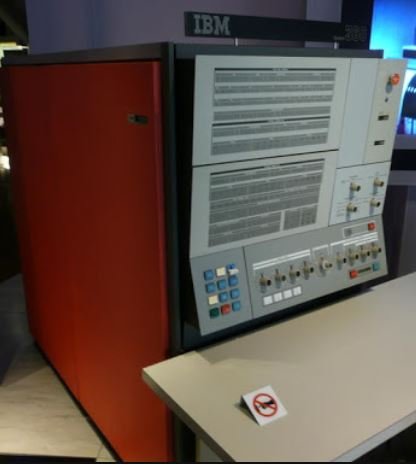
UNIVAC 1108
- Introduced in 1964
- Replaced Thin film resistors with Integrated Control Register
- Supported up to 16 input/output channels
- Memory capacity was 64k 38-bit words

Honeywell 6180
- Rebadged version of General Electric’s 600 series
- Manufactured from 1970 to 1989
- Maximum Memory support was 256K (1MB of 9-bit bytes)
- CPU operated on 36-bit words and addresses were 18 bits.
Minicomputer in 3rd Generation Computers
Minicomputers are smaller and less powerful than mainframes or supercomputers, but more powerful than personal computers.
The various places of application are transaction handling, scientific computation, database management, and many more.
The Common Minicomputer in the 3rd Generation was
PDP-8/I
- 12 Bit Minicomputer that was produced by Digital Equipment Corporation (DEC)
- An integrated version of the popular PDP-8 which was the second generation.
- The Price of this third Generation mini-computer was $18,500 in 1965.
- The main memory capacity was 4,096 (2^12) twelve-bit words.
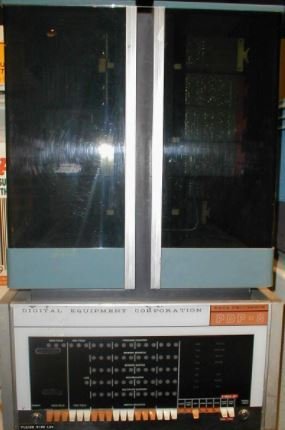
PDP-11/20
- Most Popular Minicomputer in PDP series.
- The First Version of Unix ran on PDP-11/20.
- The PDP-11 replaced the PDP-8 in many real-time applications
- PDP-11 expanded from 16 to 32-bit addressing
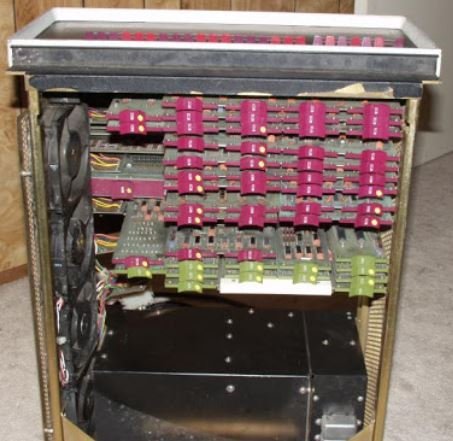
Personal Computers in 3rd Generation Computers
Xerox Alto and Star
- Xerox Alto developed at Xerox PARC in 1973
- First Personal Computer to implement Graphical User Interface
- Incorporated Various Technologies such as icon folder, mouse, Ethernet Networking, E-mail, and many more.
- Later Xerox Alto inspired Apple Lisa and Apple Macintosh also learning to Windows PC.
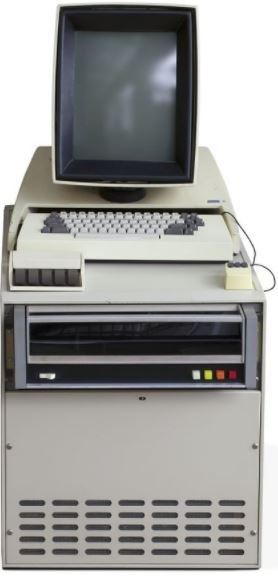
Frequently Asked Question (FAQ)
Who created the third generation of computer ?
What are the advantages of third generation computers ?
What are disadvantages of third generation computers?
What are the characteristics of third generation computers ?
what are the examples of third generation computers?
Third generation of computer was based on which technology ?
Aayush Kumar Gupta is the founder and creator of ExploringBits, a website dedicated to providing useful content for people passionate about Engineering and Technology. Aayush has completed his Bachelor of Technology (Computer Science & Engineering) from 2018-2022. From July 2022, Aayush has been working as a full-time Devops Engineer.

